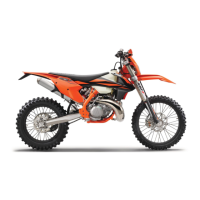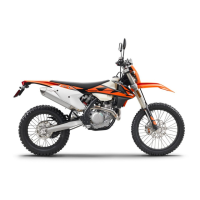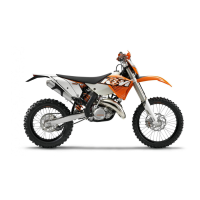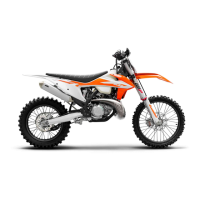How to fix a KTM Motorcycle when the engine cannot be cranked with the electric starter?
- MMichael MatthewsAug 3, 2025
If your KTM Motorcycle engine fails to crank with the electric starter, several issues could be responsible. Begin by ensuring you are following the correct start procedure. A discharged battery is a common cause; recharge it and check the charging voltage, closed current, and alternator stator winding. Inspect the main fuse and replace it if it's blown. Also, the starter relay or the starter motor itself might be faulty and require inspection.







